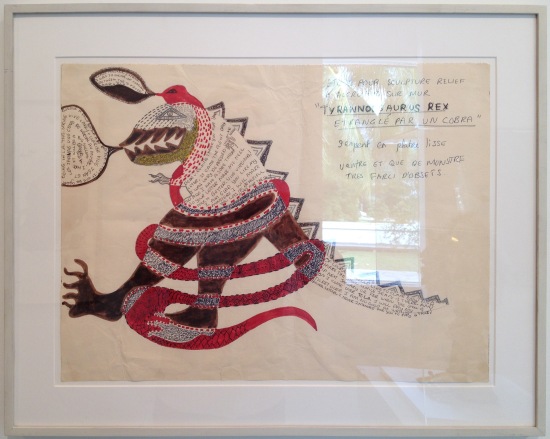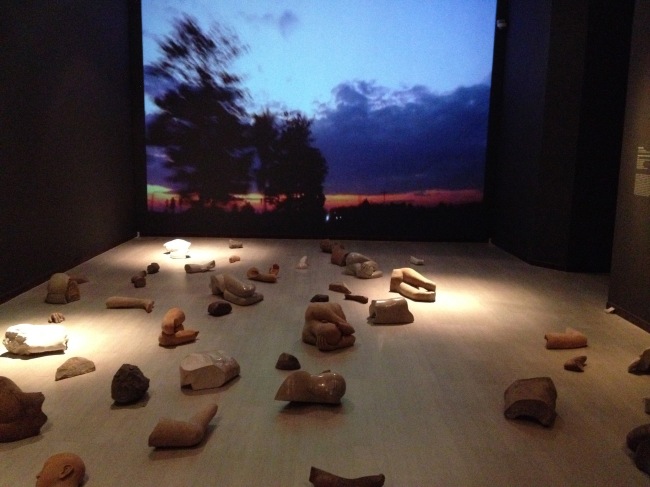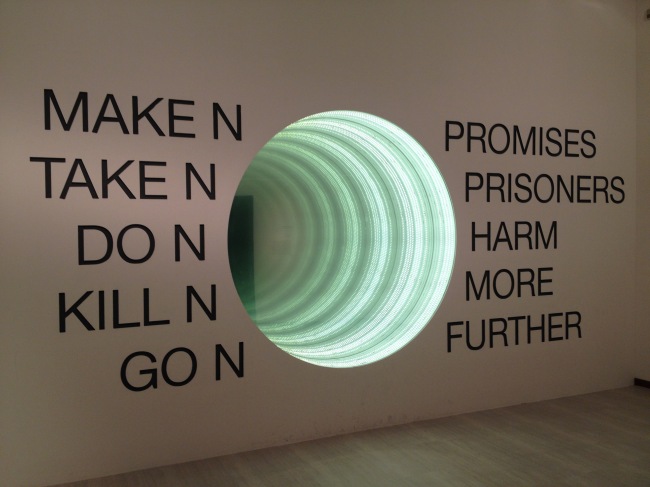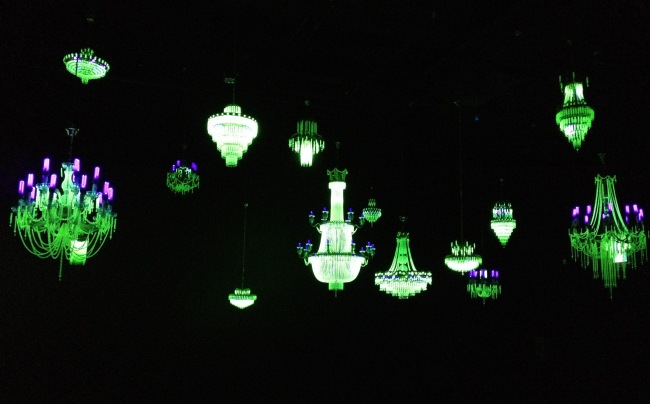When I first saw the title for this exhibition I was put off. I’m not fond of the word “Lady”, and honestly, in the art world, when used to refer to an artist the term makes my stomach churn. “Lady” carries many subtle and not so subtle cultural signals, but the first thing that springs to mind is politeness and gentility which is, in the mind of this artist, death to the exploratory impulse. Great work is most certainly not polite. So, I was relieved to learn from the press materials that the title of the exhibition was meant to be a provocation of sorts. Still not in love with the moniker, but in this context it makes sense as a linguistic counterpoint to what is so obviously not a ladylike grouping of artists and work. It is simply strong work and the thread that happens to bind the work together is that it happened to be created by some of the greatest visual voices of the 20th century both past and present.
To Be a Lady was organized by Sundaram Tagore Gallery in collaboration with the Brooklyn-based non-profit Norte Maar. A previous iteration of the exhibition was presented in New York in 2012 at the 1285 Avenue of the Americas Art Gallery in collaboration with 1285 Avenue of the Americas and Jones Lang LaSalle. Both the current and 2012 versions of the exhibition were curated by Jason Andrew.
Sundaram Tagore Gallery has two galleries in New York, and one each in Hong Kong and Singapore. The Singapore gallery is in a gallery district called Gillman Barracks, which is an old regiment barracks that has been converted into a collection of contemporary art galleries in the heart of Singapore.
The photos that follow are some of my favorite works that were included in the exhibition. There was also an exquisite Helen Frankenthaler, but unfortunately I was not allowed to photograph it.
For more information about the exhibition please consult the websites of Sundaram Tagore Gallery and also the website of Norte Maar.
Janice Biala
Red Still Life, 1957
Oil on Canvas, 35″ x 46″, Estate of Janice Biala, courtesy Tibor de Nagy Gallery, New York
Installation View
From left, Janice Biala, Hermine Ford, Elizabeth Murray, Jane Lee, Lynda Benglis, Ruth Asawa, Viola Frey and
Ghada Amer
Foreground:
Lynda Benglis
Beatrice, 1979
Chicken wire, plaster, gesso and gold leaf 39″ x 19″ x 9″ Courtesy of the artist and Cheim & Read, New York
Background:
Dorothea Rockburne
Copal #14, 1977
Kraft Paper, copal oil varnish, Prismacolor pencil #3, 3M 415 tape 39″ x 29″
Courtesy of the artist and Van Doren Waxter Gallery, New York
Hermine Ford
Bird Music, 2012
Oil paint, ink, watercolor, gouache, pencil and colored pencil on canvas on shaped wood panel 87″ x 38 3/4″ x 3/4″
Courtesy of the artist and Norte Maar
Hermine Ford Bird Music (Detail)
Yin Xiuzhen
Body Temperature No. 6, 2010
Clothes, aluminum plate 85.8″ x 25.4″ x 3.9″ Courtesy of the artist and Pace Beijing
Yin Xiuzhen Body Temperature No. 6 (Detail)
Ruth Asawa
Plane Tree #16, 1960
Green ink on coated paper 19″ x 25″ Courtesy Amy Wolf Fine Art and Elrick-Manley Fine Art, New York
Foreground:
Ruth Asawa
Background:
Jane Lee
The Jane Lee piece had been taken off the wall for a small repair. It is meant to be wall mounted.
Jane Lee
Juju, 2013
Fry acrylic paint, acrylic heavy gel on fiberglass base canvas 110″ diameter
Courtesy of Sundaram Tagore Gallery
Jane Lee Juju (Detail)
Jane Lee Juju (Detail)
Pat Steir
Painting with red and gold in the center, 2012
Oil on canvas 60″ x 50″ Courtesy of the artist and Cheim & Read, New York
Kristen Jensen
Untitled, 2012
Unglazed porcelain and white oak 31″ x 15″ 19″ Courtesy of the artist and Norte Maar
Grace Hartigan
Pomegranate, 1961-62
Oil on canvas 62 3/4″ x 50″ Private collection, New York
Visible from left: Nancy Grossman, Vanessa German, Shirin Neshat, Dorothea Rockburne, Judith Murray and Niki de Saint Phalle
Niki de Saint Phalle
Study for sculpture Tyrannosaurus Rex, c. 1963
Marker, ink, pencil on paper 14.2″ x 19.3″ Virginia Dwan Collection, New York, courtesy Norte Maar
Niki de Saint Phalle Study for sculpture Tyrannosaurus Rex (Detail)
Judith Murray
Elements, 2011
Oil on linen 36″ x 40″ Sundaram Tagore Gallery
Shirley Goldfarb
Orage, 1955
Oil on canvas 51″ x 76 3/4″
Shirley Goldfarb Estate, courtesy Loretta Howard Gallery, New York
Shirley Goldfarb Orage (Detail)
Shirley Goldfarb Orage (Detail)













































